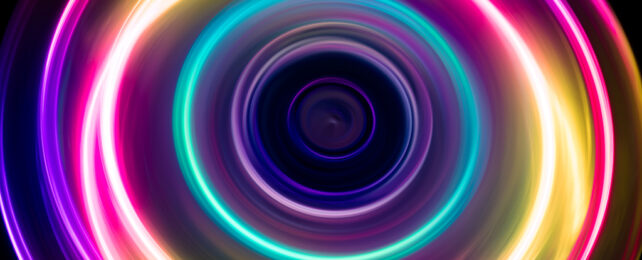A completely new structure of light just dropped, called the chiral vortex – and the international team of scientists behind its creation says it could be crucial in developing new drugs and in accurately diagnosing diseases.
As the name tells you, the new light beam takes a standard light vortex, where light spirals as it travels, and adds chirality: a property molecules and ions can have where they are either in a left-hand or a right-hand mirror image configuration (just like human hands).
Making the light chiral at every point means scientists can measure chirality in molecules with high sensitivity. The 'handedness' of molecules can significantly change the way they interact and behave, and this can mean the difference between molecules being beneficial or harmful to the body.
"Cutting edge research shows that the relative concentration of left vs right molecules can serve as a biomarker for cancers, kidney, and brain diseases," says physicist Olga Smirnova, from the Max Born Institute in Germany.

As well as identifying diseases, chirality is also an important part of drug development. Drugs that differ in the arrangements of their atoms can end up having unintended effects, and that can skew scientific research and cause devastating health consequences.
The new technology seeks to preempt these mistakes. When the chiral vortex interacts with chiral molecules, the molecules emit photons. By measuring the pattern of these photons, scientists can get an accurate reading on how many left-handed and right-handed molecules are involved.
While there are already ways of measuring chirality in molecules, the researchers hope the chiral vortex promises to be more reliable, more accurate, and cheaper than what we already have – requiring smaller sample sizes to get better results. However, it still needs to be further developed and scaled up.
"Traditional measures of chirality have struggled to identify the concentration of right- and left-handed molecules in samples containing almost equal amounts of both," says physicist Nicola Mayer, from the Max Born Institute.
"With our new method, a tiny excess in the concentration of either mirror twin can be detected, possibly enough to make a life-changing difference."
We're not sure how chirality first emerged, but it may have originated from deep space, before going on to play a profound role in so many different aspects of life on Earth. Having instruments that can better detect chiral molecules would be a major step forward.
This is also a technology that could prove useful in other areas – from understanding the fundamental interactions between light and matter, to controlling chemical reactions with light.
"These signals can also provide a snapshot into how electrons move inside molecules at their natural speed," says Mayer. "This understanding can lay the groundwork for shaping the behavior of electrons and even eventually influencing chemical reactions with light."
The research has been published in Nature Photonics.
